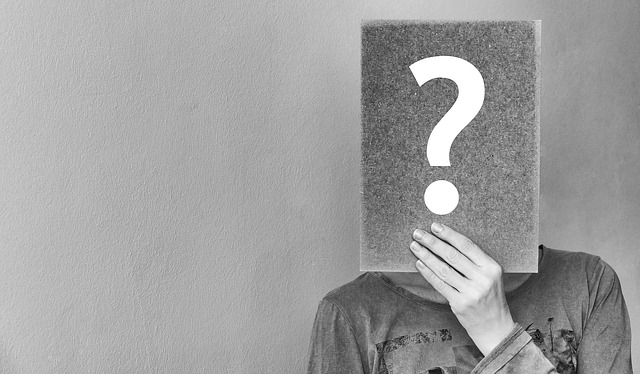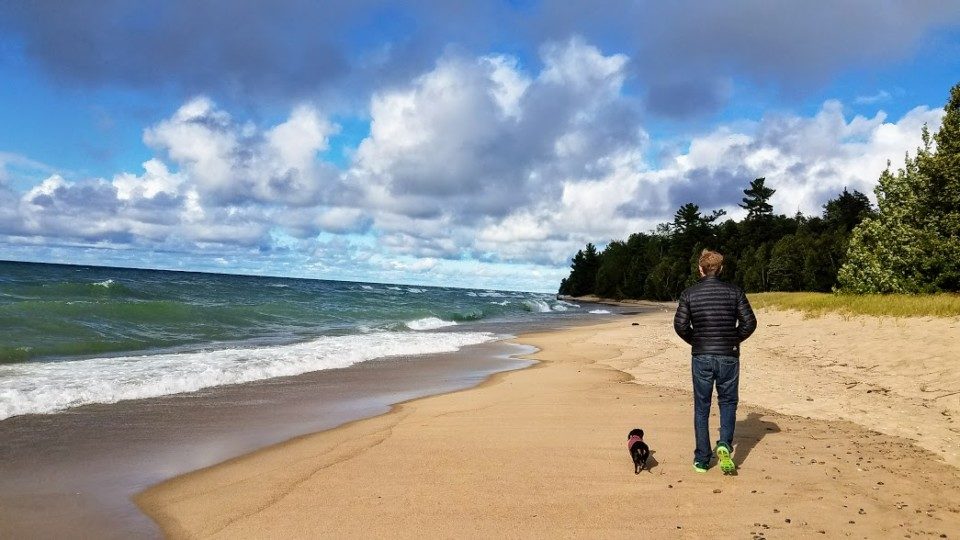In my last post I shared some thoughts on pain education and the phrase ‘pain is an output of the brain‘. I compared pain as output to pain as a lived, conscious, complex experience that people feel.
From my perspective, describing pain as an output robs the experience of pain’s harsh, all-encompassing, life-changing reality. We are not machines producing outputs. We are people, biological organisms who are magnificently complex. (However, I do think “pain as an output” is useful within a limited context of clarifying that it is not an input. That is still highly misunderstood and needs clarifying. But the phrase doesn’t explain the entirety of pain, nor was it ever meant to.)
This is why I think it an important distinction to differentiate between explaining our current understanding of pain science, which is still limited (as is our understanding of consciousness, until that problem is solved how we experience being human, let alone being a human in pain, is still a big unknown), and explaining what pain is, in all it’s complexity and contexts and meanings.
(If you haven’t read Meanings of Pain, edited by Simon van Rysewyk, I highly recommend it.)
Both are necessary when it comes to making sense of pain. But the latter, the ‘what it’s like’ to live with pain and what pain means, can only be explained by the people living with it We have much to learn from them. Yet pain education tends to only flow one way, and that needs rectifying.
Educating the patient about pain?
Fairly frequently ‘education’ of some form or another is mentioned as a first step in pain treatment on various blogs and in social media conversations. It can take the form of ‘patient education’ or ‘educate the patient’ or ‘pain science education’ or ‘therapeutic neuroscience education’. The common theme is that the clinician is educating the patient about pain. The clinician is the expert, the patient the passive recipient of information.
To educate means to give intellectual, moral, or social instruction to. You are either the educator or the educated. There is a hierarchy, the expert and the unknowing student. In this context, it is implied that the clinician has knowledge of import they need to impart to the person living with pain. It is the clinician telling the patient what pain is and what it is not.

Think about that
A person living with pain goes to a clinician for treatment and the first step is to tell them what pain is. The audacity!
People living with pain know what pain is. Better than anybody. Even if they can’t find the words to articulate their experience or don’t know the science of it, they live pain. No one knows pain more that the person who has lived with it for a long period of time. It’s an unsolicited, unexpected education.
What they may not know is the science of pain or the biology underlying pain processes. But pain science is not pain itself. Pain is not a thing that can be solely objectively studied because pain never occurs bereft of context. This is problematic for a lot of folks, though, despite it being widely agreed upon that pain is deeply personal and always subjective.
Wouldn’t it stand to reason the person living with pain can best say what “it” is and that they “have” it? It doesn’t seem so. Healthcare is rife with doubt and suspicion of patients’ pain reports. They are often put in the extremely difficult position to constantly prove that their pain is real (making recovery even more difficult).
(For two interesting reads on pain subjectivity and objective measurements and medico-legal concerns, read Law & Disorder – pain in the legal system by Tim Cocks and this post by Flavia Di Pietro of Body in Mind that addresses concerns about trying to identify pain neurosignatures and a recent consensus statement on neuroimaging as an objective measure of pain.)
This is true for all of our human experiences, not just pain
All of our experiences are subjective AND all have biological processes involved. We are biological organisms, after all. Nothing we experience – not our thoughts or emotions, beliefs or expectations, ability to learn or memories, nor our social interactions or sense of self or our sense of our place in the world – happens somehow separate from us as a biological organism. (Go here for more on how our ‘psychological’ factors are biology, too.)
But that doesn’t mean explaining biology explains what it means or what it’s like to think or plan or remember or feel. Explaining biology doesn’t explain what it’s like to be human. To live, love, laugh, grieve, cry, and hurt. It doesn’t explain what it’s like to suffer or to feel joy. To be stressed out or to cope well. To fail or to succeed.
When you think about sex, do you think about the underlying biology? When you think of your academic or work achievements, your last really good meal, the birth or death of a loved one, your asshole coworker, your best friend, or your last vacation, do you think of them in terms of the correlating inputs, outputs and biological processes that created that experience?
It’s obvious there’s more to the human experience than can be explained by biology (AND biology is a part of all it). Same goes for pain.
So who is educating whom?
Our knowledge of pain science, though invaluable, is not enough to explain what it is like to experience pain, to live with pain, to have all aspects of one’s life colored by pain and be affected by pain (and to have those aspects of life then affect pain, too.). Pain is experienced by the human, not by a body part, not even by the brain. And that complex human lives in a complex world.
So, understandably, explaining pain science at patients probably isn’t all that useful. And it’s probably frustrating for clinicians (why aren’t they getting it!) and patients (what the hell are they talking about? That has nothing to do with my pain!).
Throwing pain education or information about pain at folks bereft of their context and their needs, no matter how accurate or reflective it is of our current understanding of the science (and remember, there is still a lot of unknowns and uncertainty!), just isn’t going to stick. It needs to be relevant to them. To their past experiences, to their current situation, and to their path forward.
My path forward involves lots of hikes, sometimes to alpine lakes above 11,000 feet. This is Timber Lake in Rocky Mountain National Park.
That’s why I’m a fan of making sense of pain together
That can only take place, though, when the person in pain is the educator, too. When the person in pain can share what their pain is like, what they think it means, how it affects their life, and what successful living might look like to them.
Within that context, the science of pain can be immensely useful. Understanding the biology of pain (and of stress, for that matter) can help validate our pain and our experience, assuage our fears, let us know we’re not alone, and give us hope that things can change. It can help us understand that a life can be lived now, that we don’t have to wait anymore. And it can guide how we get back to living.
Bioplasticity is pretty freakin’ cool. Humans are pretty freakin’ fascinating, adaptable, strong, and resilient beings.
It’s pretty freeing to be empowered with knowledge, skills and support. To have some control and a greater understanding, to be believed and understood.
To know there is a way forward.
Science says your pain is real
If education is on the menu, the first bit of education any person living with pain should receive is that the science clearly shows us that their pain is real. That no matter it’s origins, no matter how or where it is felt, all pain is real.
Patients need to know this. They need to hear this. It is far from implicit. They need to feel heard. To be validated and believed. They need to know that there are no boxes to be checked, no criteria to be met, for their pain to be considered legitimate. That their distress is real and heard and understood (and understable! Pain is friggin’ distressing, especially when it doesn’t make sense!).
That’s the best use of pain science. As proof that all pain is real. And complex.
Too many patients have been told their pain is not real, either implicitly or explicitly. They’ve been doubted and dismissed by so many people it is no wonder they might feel angry, frustrated, and demoralized. It’s dehumanizing to be treated in such a way.
They’ve been told there’s no reason for their pain or that it’s all in their head or that nothing can be done.
The science has shown us that these things are not true. People living with pain need to know those things are not true. That’s education!
A note on “there’s nothing that can be done”…
People being told there is nothing can be done irks me just as much as them being told they’re making shit up. It robs people of hope unnecessarily. AND IT’S NOT TRUE. It usually means there’s nothing that particular clinician can do, not that there is nothing at all that can be done.
There’s usually plenty that can be done and, no matter what, there is always something that can be done to change someone’s experience or improve their quality of life.
This is true even when a condition is ‘untreatable’ or terminal (watch this amazing video by Claire Wineland, who has cystic fibrosis, called Living While You’re Dying.). Look to the palliative medicine research and the writings of Atul Gawande, or watch his On Being interview “What Matters in the End“, for some perspective on this.
There is ALWAYS something that can be done to help someone live a meaningful life they can be proud of.
Reconceptualizing ‘pain education’
How about this for education? ‘I believe you. Your pain is very real. I can’t imagine how difficult all that must have been. You’ve done an amazing job of it so far.’ And why not a little ‘We will work together to make sense of your pain and plot a path forward.’ That doesn’t mean you have to know how to fix their pain. It means you can help them to get back to living their lives.
That’s the second best use of pain science education: Plotting the path forward. Knowing we can change our experience and that our lives can get better. And that can happen even if the pain doesn’t change.
To have a more complete view of pain you need the science AND the lived experience perspective
We can explain how the the current understanding of pain science – an incomplete, uncertain, most plausible biological understanding of what is happening in the human organism when a person experiences pain – is relevant to people’s experiences in order to help them make sense of things. And we can use that information, along with their story, their goals, and what is meaningful to them, to plot a path forward.
But please don’t lecture patients, they’re already schooled in pain. Have a discussion so you can learn from one another, so you can work together toward making sense and making a plan. Empower people living with pain with knowledge, understanding and actionable skills that are relevant to their experience and their lives.
Keep in mind that they are the captain of their ship. It is their very existence we are talking about here. And the majority of their time is spent navigating these waters on their own.
And these conversations shouldn’t just take place in the confines of a clinic or in the context of treatment. For more (who the heck would want more!) about learning from patients there are some cool links in my last newsletter on qualitative and phenomenological research and what listening could look like. Like “Trust me, I’m a patient“!
TL:DR
Pain science education should be used within a context of hearing the person living with pain and validating their experience to help them make sense of their pain and plot their path forward.
My path forward :) This is what matters to me. And pain science education helped me make sense of my experience and get back to traveling.
This pic was taken along the southern shores of Lake Superior in the Yoop. We were in Michigan for my brother’s wedding. It was all amazing.



29 Responses to "Pain education – educating patients or making sense of pain together?"